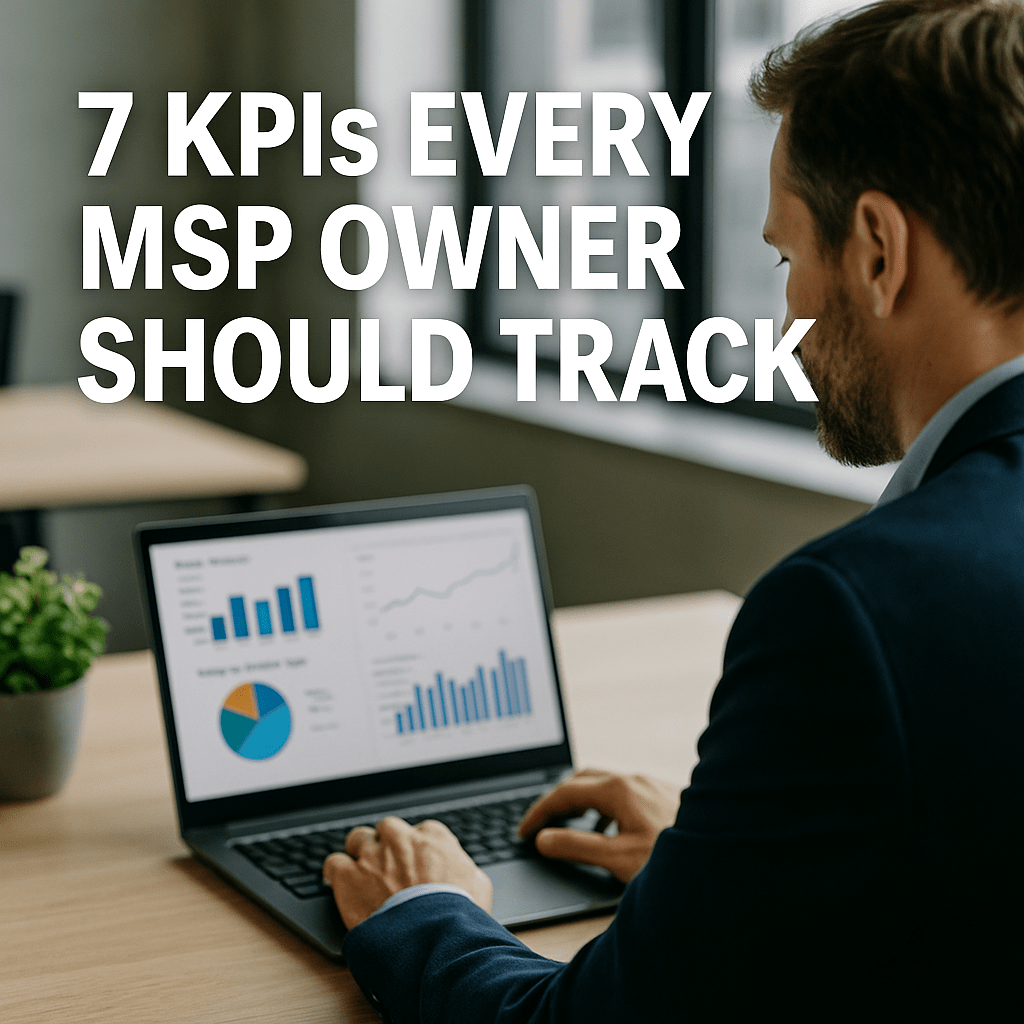The 7 KPIs Every MSP Owner Should Be Tracking (But Probably Isn’t)
You can’t manage what you don’t measure.
But most MSP owners are tracking the wrong numbers.
They can tell you their MRR, ticket count, and maybe revenue growth — but not their labor utilization, gross margin, or how long cash will actually last.
That’s the difference between an MSP that survives and one that scales.
The truth is, the MSP business model lives and dies by metrics.
And the most successful owners don’t wait for their CPA to tell them if they made money — they already know.
Here are the 7 KPIs every MSP owner should be tracking (but probably isn’t).
1️⃣ Gross Margin %
Your gross margin tells you how much of each dollar you actually keep after delivering services.
If your gross margin dips below 50%, your prices or delivery costs are out of balance.
Why it matters:
It’s the clearest indicator of whether your MSP is profitable — or just busy.
Target: 55–65% gross margin is healthy for a service-heavy MSP.
2️⃣ Labor Utilization %
Your technicians are your biggest expense.
If they’re not billable, you’re losing money — even when tickets are flying.
Why it matters:
Low utilization means you’re paying for idle labor. High utilization means your delivery model is efficient.
Target: 70–80% utilization across your technical team.
Pro Tip: Track fully burdened cost (wages + taxes + benefits) against billable time. You might be shocked where your profit is really going.
3️⃣ Average MRR per Client
It’s not about how many clients you have — it’s about how profitable each one is.
Why it matters:
If you’re juggling 40 small clients at $500/month, you’re working harder for less profit than 10 clients at $2,000/month.
Target: Gradually raise your average MRR until you hit your ideal revenue-to-client ratio.
More isn’t always better — better is better.
4️⃣ Recurring vs. Non-Recurring Revenue Ratio
Consistency is everything.
MSPs that rely too heavily on project work ride a roller coaster — fat months, lean months, constant anxiety.
Why it matters:
Your recurring-to-project ratio shows how stable your business really is.
Target: 70%+ recurring revenue for predictable cash flow and valuation growth.
5️⃣ Accounts Receivable Days (AR Days)
You wouldn’t ignore an open ticket, but you might ignore an open invoice — and it’s killing your cash flow.
Why it matters:
AR over 30 days means you’re financing your clients’ businesses.
Target: Keep AR under 20 days by requiring ACH or credit card payments, and automating recurring billing.
6️⃣ Client Retention (or Churn Rate)
Every lost client wipes out months of profit.
Why it matters:
Retention isn’t just a customer service metric — it’s a financial one.
Even small improvements in retention have a compounding effect on long-term profit.
Target: 90–95% annual retention.
Pro Tip: Track not just who left, but why. If churn is tied to service satisfaction or pricing, your KPIs will point you to the root cause.
7️⃣ 13-Week Cash Flow Forecast
Your P&L won’t warn you that you’re about to run out of money — cash flow will.
Why it matters:
A 13-week forecast helps you anticipate dips, plan expenses, and make proactive decisions before it’s too late.
Target: Update weekly. It’s not accounting — it’s survival.
💡 Here’s the Big Picture
You can’t fix what you can’t see.
And until your financial metrics are crystal clear, you’re flying blind — even if revenue is growing.
KPIs don’t just measure your MSP’s performance; they predict its future.
At Synergy Bookkeeping, we help MSP owners implement financial systems that reveal what’s really working — and what’s quietly draining profit.
Learn more about our Bookkeeping for MSPs services — built by an MSP, for MSP owners.
Ready to Turn Your Numbers Into Decisions?
Let’s track what matters, fix what’s broken, and give you the clarity to scale with confidence.
👉 Schedule a Free Consultation



